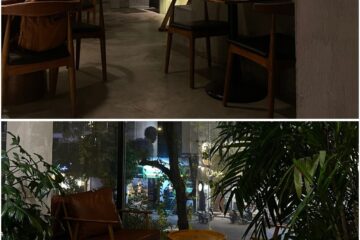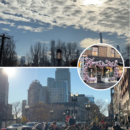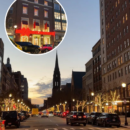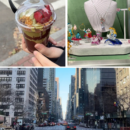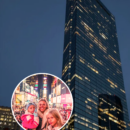
Luxury Shopping in New York: Fifth Avenue and Beyond
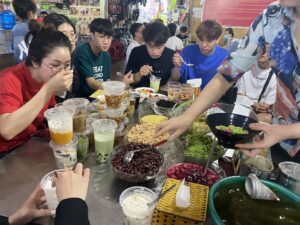
New York City is synonymous with luxury, and nowhere is this more evident than in its world-class shopping scene. From the iconic flagship stores along Fifth Avenue to the trendy boutiques of SoHo and the modern allure of Hudson Yards, the city offers a paradise for those seeking high-end fashion, timeless jewelry, and cutting-edge design. Whether you’re a seasoned shopper or just exploring the world of luxury, New York has something for everyone. In this guide, we’ll take you on a journey through the city’s most exclusive shopping destinations, uncover hidden gems, and provide tips to make the most of your experience, including recommendations for luxury brands, seasonal sales, and must-visit spots.

Fifth Avenue is the crown jewel of New York’s luxury shopping scene, often referred to as “the most expensive street in the world.” Stretching from 49th to 60th Street, this iconic strip is home to legendary brands and flagship stores. Begin your journey at Tiffany & Co., a symbol of timeless elegance and the ultimate destination for fine jewelry. Recently renovated, the store offers an immersive experience that blends history with modern luxury. For fashion enthusiasts, Saks Fifth Avenue is a must-visit. This upscale department store features floor after floor of designer collections, from Chanel and Gucci to emerging brands. Don’t miss their seasonal sales, where you can snag coveted pieces at a fraction of the price. Nearby, Louis Vuitton and Bergdorf Goodman provide an unparalleled selection of haute couture and personalized services that cater to discerning tastes.
For a more eclectic luxury shopping experience, head to SoHo, where cobblestone streets and historic architecture set the stage for trendy boutiques and flagship stores. This neighborhood is perfect for discovering cutting-edge fashion and unique finds. Alexander Wang, Balenciaga, and Saint Laurent all have stunning storefronts here, offering curated collections that reflect the pulse of contemporary fashion. Beyond the big names, SoHo is known for its hidden gems like The Webster, a multi-brand boutique showcasing emerging designers alongside established luxury labels. The neighborhood also boasts a vibrant art scene, so take some time to explore galleries and installations as you shop. For those seeking vintage luxury, What Goes Around Comes Around offers a carefully curated selection of pre-loved designer pieces, from Hermès Birkin bags to rare Chanel jewelry.

If you’re in search of a modern, futuristic shopping experience, look no further than Hudson Yards, the city’s newest luxury hub. This sleek, state-of-the-art development is home to The Shops at Hudson Yards, where you’ll find high-end brands like Dior, Fendi, and Cartier. The shopping center’s contemporary design and open layout make it a pleasure to explore, and many stores offer personalized shopping services for an elevated experience. Hudson Yards also features Neiman Marcus, a luxury department store with everything from designer clothing to exclusive beauty products. While you’re there, take a break from shopping to visit The Edge, the highest outdoor sky deck in the Western Hemisphere, for breathtaking views of the city.
For a complete luxury shopping experience, timing is everything. New York’s seasonal sales are legendary, offering incredible opportunities to score discounts on designer items. The best times to shop are during the summer sales in June and July, as well as post-holiday sales in January and February. Black Friday and Cyber Monday also bring significant markdowns, but be prepared for crowds. Many stores offer VIP shopping appointments, allowing you to browse at your own pace while avoiding the hustle and bustle.
Luxury shopping in New York isn’t just about the big-name stores—it’s also about discovering unique, high-end experiences that go beyond the typical retail environment. For instance, The RealReal in SoHo offers authenticated, pre-owned luxury goods in a chic, eco-friendly setting. This is a great place to find rare items while supporting sustainable fashion. Similarly, ABC Carpet & Home in Flatiron is a treasure trove of luxury home goods and artisanal decor, perfect for those looking to bring a touch of sophistication to their living spaces.
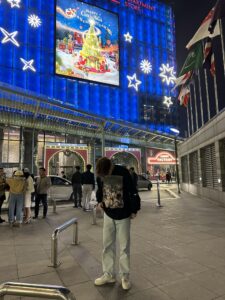
Dining is an integral part of the New York shopping experience, and the city offers plenty of options to refuel in style. Along Fifth Avenue, consider stopping at Ladurée for a taste of Parisian luxury with their famous macarons and elegant tea service. In SoHo, Sadelle’s is a popular spot for upscale brunch, known for its towering bagel towers and indulgent smoked salmon. Over at Hudson Yards, Queensyard provides a modern British dining experience with stunning views of The Vessel, making it the perfect place to unwind after a day of shopping.
Navigating the city’s luxury shopping scene is made easier with a few insider tips. First, always check if stores offer tax-free shopping for international visitors—many luxury retailers participate in this program, allowing you to save on your purchases. Second, consider hiring a personal shopper or stylist, especially if you’re short on time. Many department stores like Saks and Bergdorf Goodman offer complimentary styling services, ensuring a tailored and stress-free shopping experience. Lastly, take advantage of store loyalty programs and rewards, which can lead to exclusive discounts, invitations to private events, and early access to sales.

New York’s luxury shopping extends beyond traditional retail spaces. Events like New York Fashion Week and pop-up shops across the city provide unique opportunities to discover emerging designers and limited-edition collaborations. Keep an eye out for these special events, which often feature exclusive collections and offer a glimpse into the cutting-edge of fashion.
Luxury shopping in New York City is not just about buying—it’s about the experience. From the grandeur of Fifth Avenue to the artistic flair of SoHo and the sleek innovation of Hudson Yards, every neighborhood offers its own unique take on high-end retail. With iconic stores, hidden gems, and an ever-evolving array of offerings, New York promises a shopping adventure unlike any other. By planning your visits around seasonal sales, exploring lesser-known boutiques, and indulging in the city’s dining and cultural highlights, you’ll not only find the perfect pieces but also create unforgettable memories along the way. So grab your shopping bags and immerse yourself in the luxury capital of the world—New York awaits!



